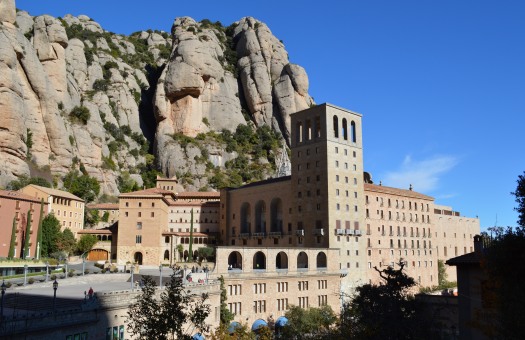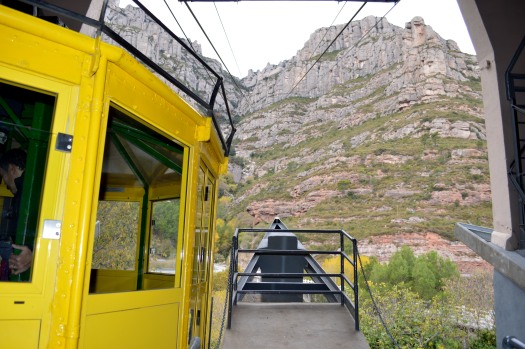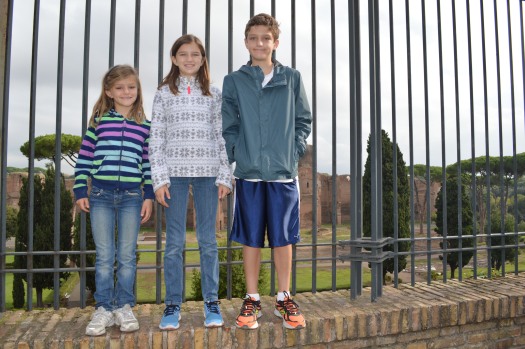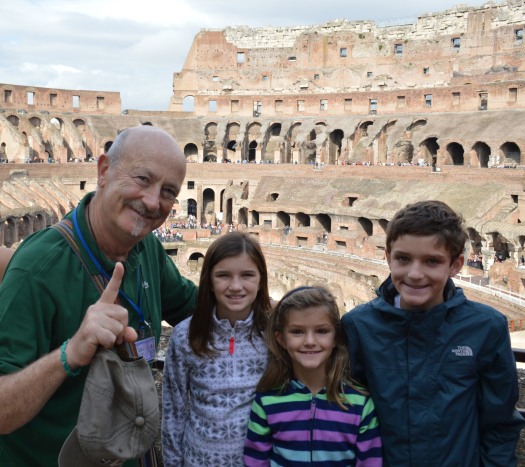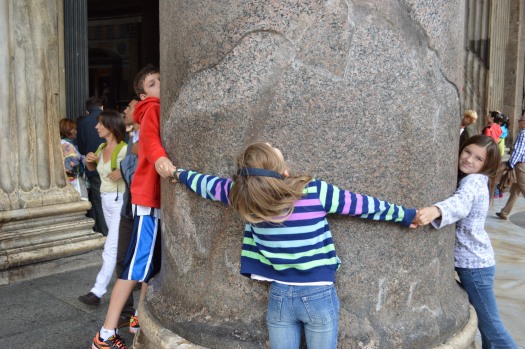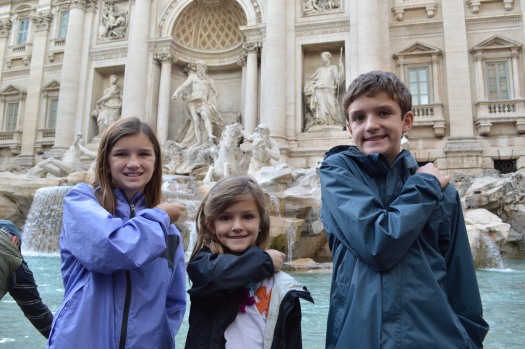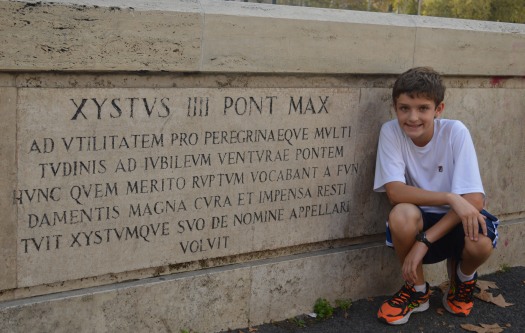Valencia sits 350 kilometers or a 3 hour drive south of Barcelona. Back in a rented Kia while making our way down the AP-7 and in between conjugating Spanish verbs in my head, I had scary visions that my first glass of orange juice in Valencia would not be fresh but concentrate. Still, orange trees flank the highway on the approach to the third largest city in Spain (population almost 800,000), so my concerns were mitigated. And, I was satisfied with the beverage I sampled the next morning, but did learn eventually that the Valencia orange was developed in California with the variety named for the city of Valencia, Spain, later leading to the name of Valencia, California.
Because our goal was not history immersion on this trip, the recommendation to stay near the Ciudad de las Artes y las Ciencias (City of Arts and Sciences) proved to be perfecto. Sleeps5.com doesn’t cover Valencia (and not sure I would have used it after the inadequate Rome experience) but we found availability at the AC Hotel, run by Marriott. Rooms were fine, not fancy as was the buffet breakfast, with fresh orange juice. The hotel was just a 5 minute walk to the City of Arts and Sciences complex and the Turia River.
An important aside, the City of Arts and Sciences sits right in the Río Turia, a former river that is now 9 kilometers of gardens, walking/cycling paths, playgrounds, ponds, sporting fields, parks (skateboard for one), cafés, artwork, climbing walls, and total outdoor enjoyment, surrounded by a fairly old city. Historically, the river could and did flood, and after a bad flood in 1957, Valencia decided to divert the stream. Now, the dried up Río Turia is the Jardín del Turia, an important component of the city, and it was crowded with locals and tourists alike during our 3-day weekend visit.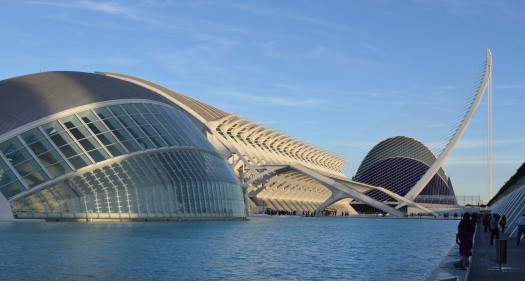
Within the City of Arts and Sciences complex (opened between 1998 and 2005) is the Príncipe Felipe Science Museum (middle building in above photo), similar to the Exploratorium in San Francisco, simply due to its focus on interactive science. We spent about 90 minutes exploring the museum, performing mannequin surgery, testing our balance, and allowing a computer to measure our distance in the standing long jump Then came the real highlight of the day, if not the trip. Outside this museum sits the shallow pool of water (above), and as per below, MEM had the opportunity to experience the pool like a hamster pedaling in his play ball. This was the best 5 Euros (per person) I spent in Valencia.
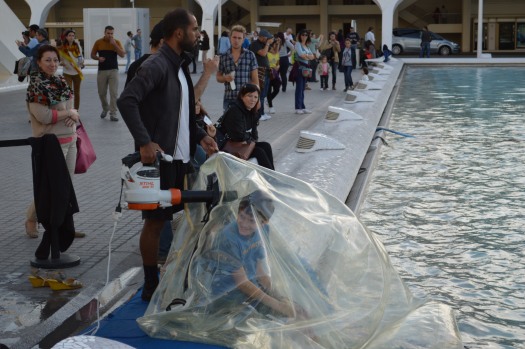

As with Madrid, and anywhere, I am convinced, bringing scooters was the right call, and perfect for Jardín del Turia. A walk could have been filled with “I’m tired”, “I’m hot”, “I’m thirsty”, but with scooters these complaints were much more limited; and, the lack of repetition allowed us to ignore these minor issues, all because of the pleasurable scooter method of transport, much better than the pure walking method. Inside the riverbed, we made our way to Parque Gulliver, a jungle gym in the shape of a massive Gulliver, with children and parents alike enjoying the structure; in fact, the ropes that hold down Gulliver are climbable and his clothes form the slides and ladders. The picture doesn’t do it justice.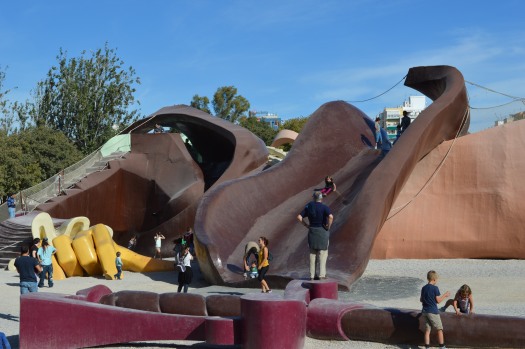
*Restaurant Alert* For lunch, we drove 30 minutes south to Casa Salvador in the town of Cullera. Valencia is the home of paella, and I was tipped off that this is the best paella in the region. Casa Salvador has been around for 60 years and it probably hasn’t changed much over time, nor have the proprietors; sweet stache. 
The deck, where we dined, sits on a picturesque lagoon, and it should be required to eat outside if the weather is decent. Most important, the paella didn’t disappoint; our two varieties were duck and leek (on the left) and vegetable. “Paella” is the Valencian word for frying pan and the three key ingredients are rice, saffron, and olive oil.  While paella is served all over Spain, we are told that the Valencia variety is unique for its socarrat. The socarrat is the crispy (some say caramelized) toasted bottom that is considered a delicacy. “To achieve a socarrat, one either needs to time the evaporation of the water properly with the completion of the rice being cooked or turn up the heat to high and listen to the bottom of the rice toast. Once the aroma of toasted rice comes from the pan, but before the rice burns, the heat is removed.”
While paella is served all over Spain, we are told that the Valencia variety is unique for its socarrat. The socarrat is the crispy (some say caramelized) toasted bottom that is considered a delicacy. “To achieve a socarrat, one either needs to time the evaporation of the water properly with the completion of the rice being cooked or turn up the heat to high and listen to the bottom of the rice toast. Once the aroma of toasted rice comes from the pan, but before the rice burns, the heat is removed.”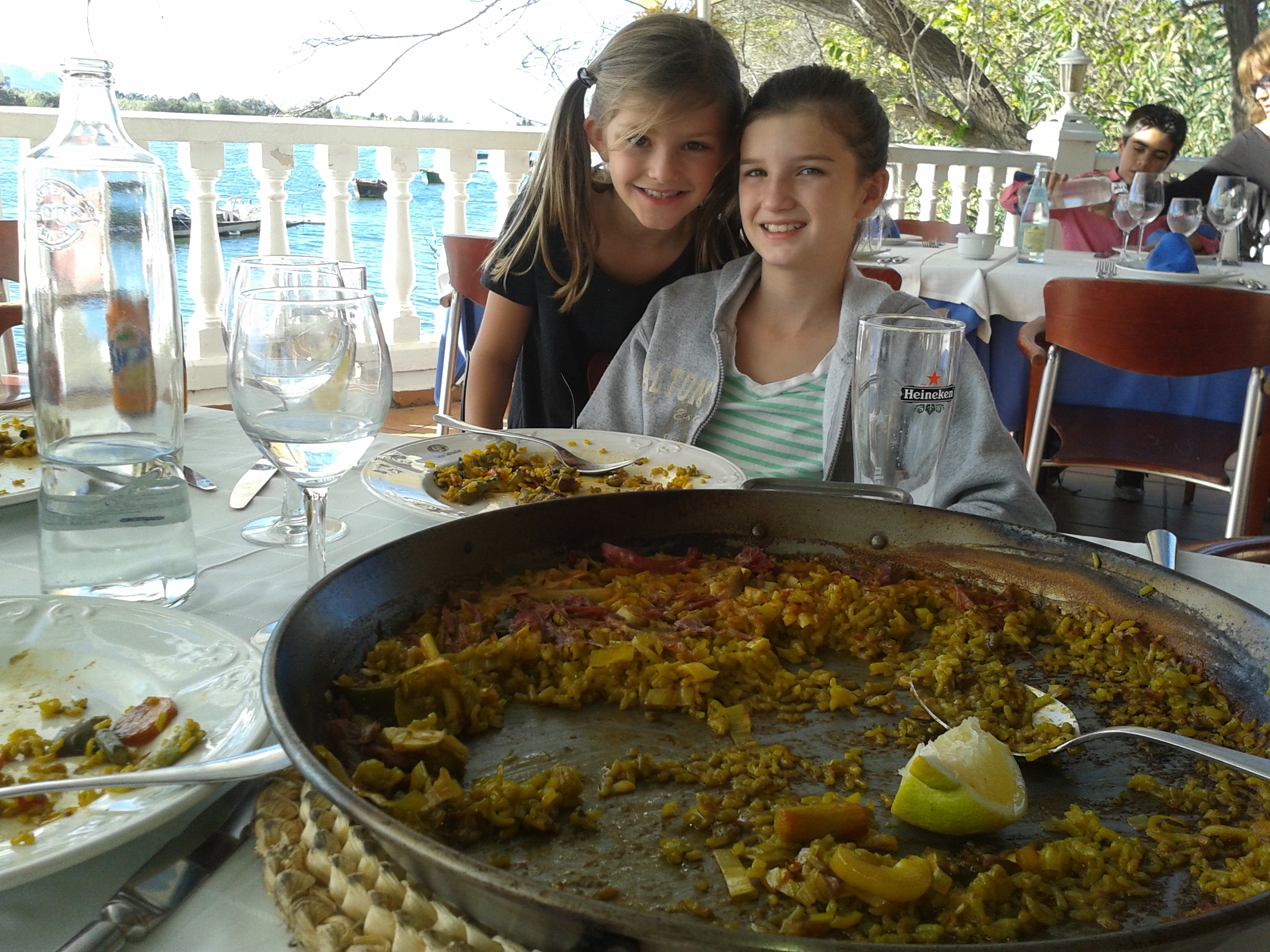
After lunch we spent some time on the beach; Casa Salvador sits between a lagoon and the Mediterranean, and it was worth the short walk to the beach to stretch our legs, swim (in Ella and Maggie’s case), and play hangman in the sand, after the long and tasty lunch.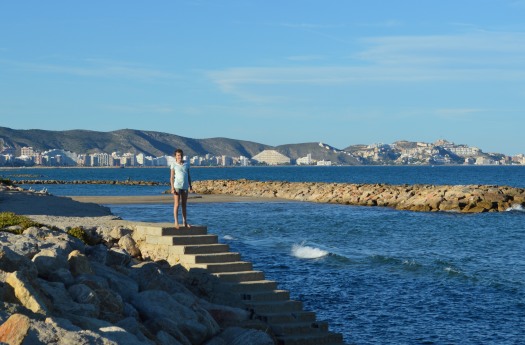
Before dinner, we visited Horchateria de Santa Catalina, in the old quarter of Valencia. Horchata is the drink that looks like milk but is made of water, sugar and tigernuts and tastes almost like a soft drink.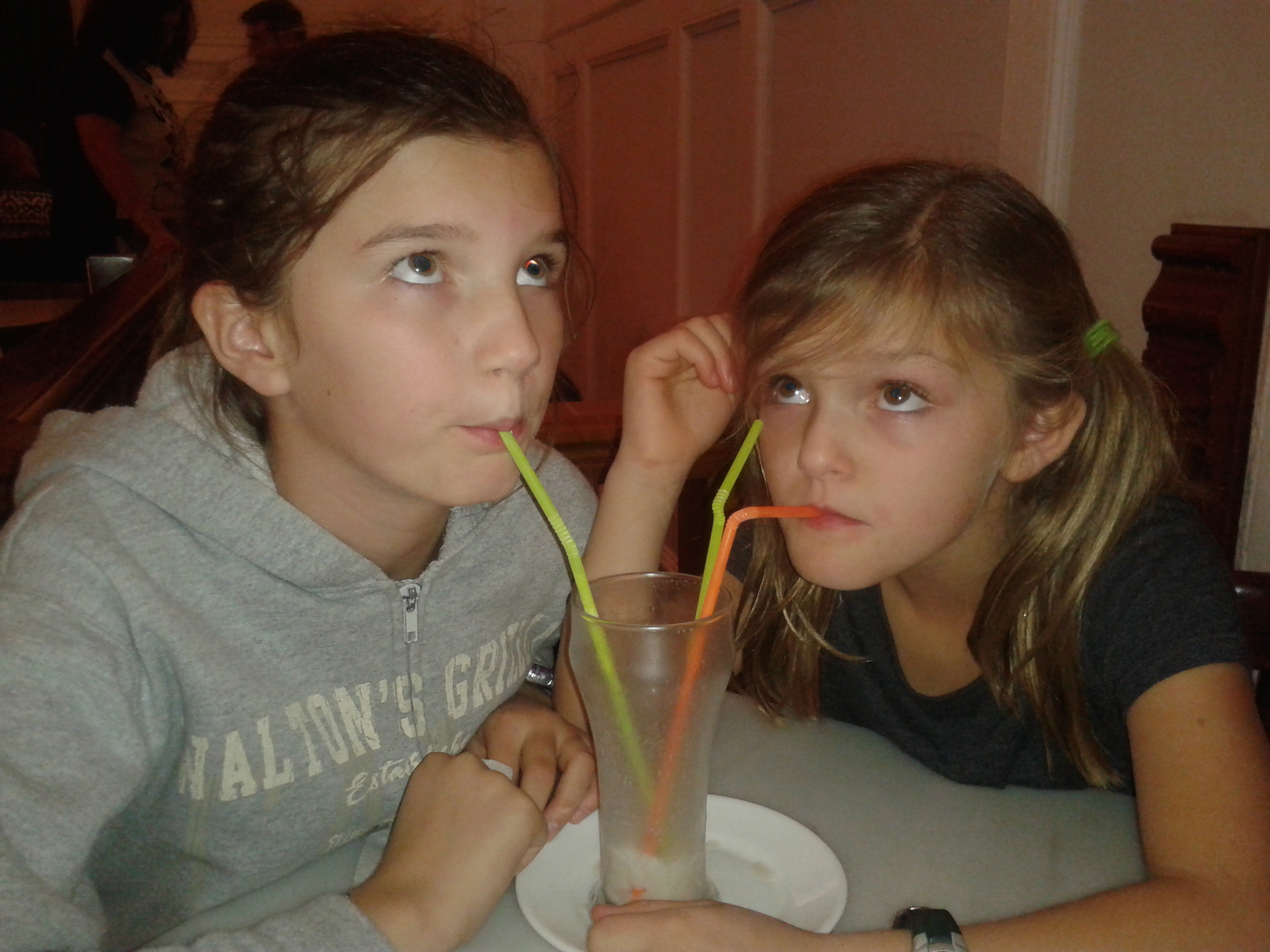
*2nd Restaurant Alert* If you like Benihana, Shintori Teppanyaki in Valencia will more than meet your needs, and seems to have at least a modest following, with its Trip Advisor rating at 214 out of 1,475 Valencia restaurants. All dishes were tasty, although it was bit unsettling to some, when, after the waitress first showed us the live lobsters we would be eating, the now sliced in half creatures were placed on the burning grill, with some of the legs still kicking.
Before heading home, we parked at the Torres de Serranos, translated into Towers of Highlands or Door of Highlands, with the name due to its location as the entrance to the city from the mountains. 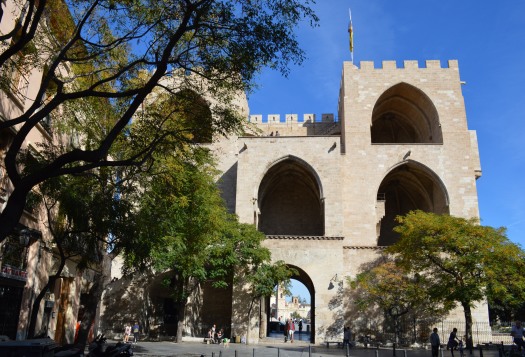 The structure was built at the end of 14th century, with its original purpose to serve as fortification. But, the Torres has apparently been used mostly for ceremonies and is informally considered the city gate. This is a perfect monument for kids, due to its climbing potential, and the fact that it is a fortress.
The structure was built at the end of 14th century, with its original purpose to serve as fortification. But, the Torres has apparently been used mostly for ceremonies and is informally considered the city gate. This is a perfect monument for kids, due to its climbing potential, and the fact that it is a fortress.
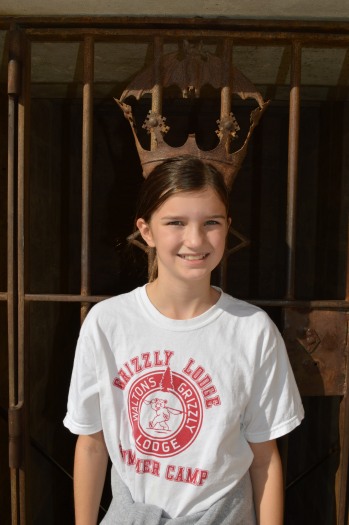
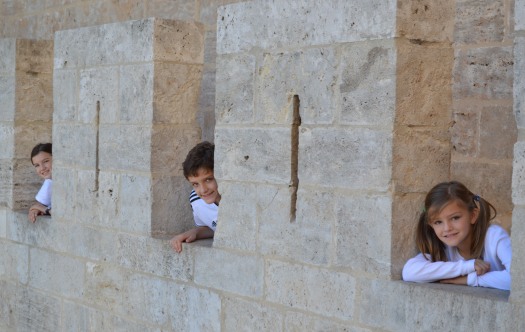
To summarize, during a 2-day trip to Valencia, stay near the Science complex, spend time inside and have your kids roll in the plastic balls outside in the pool, walk and scooter on the Río Turia, climb on Gulliver, scale the Torres de Serranos, taste the horchata, and venture down to Casa Salvador in Cullera for some of the best paella in the world.
Finally, on the drive home to Barcelona, we stopped in the town of Gaudí’s birth, Reus, near Tarragona. Unfortunately, the Gaudí Centre was closed, as it was Sunday, so we were not able to expand our Gaudí knowledge; but we were able to consume gelato.

Tags: Casa Salvador, City of Arts and Sciences, Cullera, Gulliver, horchata, Kia, paella, Río Turia, Shintori Teppanyaki, socarrat, Torres de Serranos, Turia River, Valencia


